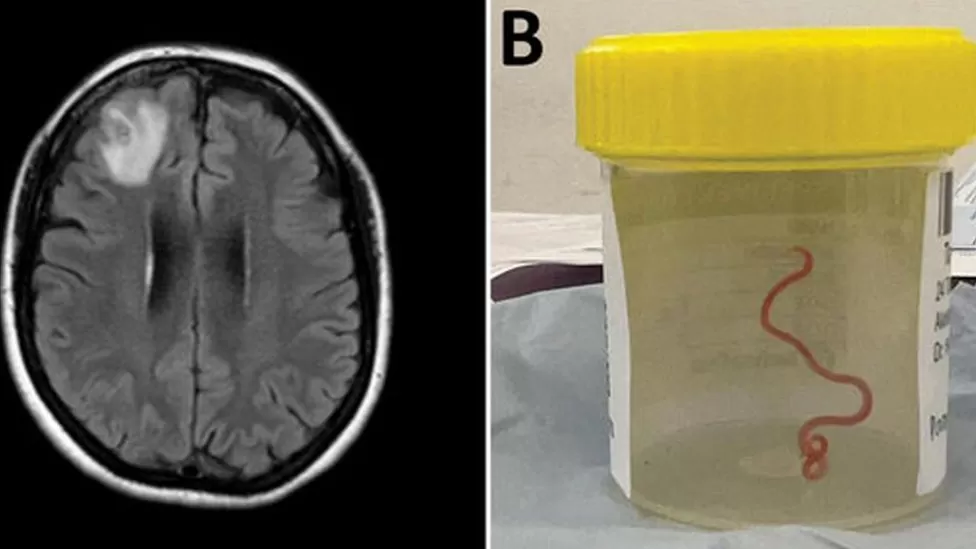Live worm found in Australian woman’s brain in world first

During surgery last year, a “string-like structure” was removed from the patient’s damaged frontal lobe.
In addition to stomach pain, a cough, and night sweats, the woman also had increasing forgetfulness and depression.
There could have been a red parasite there for up to two months.
The case highlights the increased danger of diseases and infections being transmitted from animals to humans, according to researchers.
The surgeon used forceps to pick up an abnormality in that operating room and the abnormality turned out to be an 8cm light red worm that wriggled and was alive,” said Sanjaya Senanayake, an infectious diseases specialist at Canberra Hospital.
Even if you take away the yuck factor, this is a new infection never documented before.
Ophidascaris robertsi roundworms are common in carpet pythons, a non-venomous snake found throughout Australia.
Researchers believe the woman caught the roundworm while collecting Warrigal greens beside a lake near her home.
According to Mehrab Hossain, an Australian expert in parasitology, the woman became an “accidental host” after using foraged plants contaminated with python faeces and parasite eggs.
Late in January 2021, the patient was admitted to the hospital. Later, a brain scan revealed “an atypical lesion in the right frontal lobe”. During a biopsy in June 2022, a surgeon’s knife revealed the cause of her condition.
Despite making medical history, she is recovering well.
Ophidascaris larvae had never been reported to invade the brain before, writes Dr Hossain. Considering that previous experimental studies have not demonstrated larval development in domesticated animals, such as sheep, dogs, or cats, the growth of the third-stage larva in the human host is notable.
The case is a warning, according to Dr Senanayake, an associate professor of medicine at the Australian National University (ANU).
In the last 30 years, 30 new types of infections have emerged at ANU. The majority are zoonotic diseases – diseases that have spread from animals to humans.
As human populations grow, we encroach on animal habitat as we move closer. There is no doubt that this is a problem we see over and over again, whether it is Nipah virus that has spread from wild bats to domestic pigs, or whether it is a Coronavirus such as Sars or Mers that has spread from bats into secondary animals and then into humans.
Even though Covid is now slowly disappearing, epidemiologists and governments need to ensure they have good surveillance of infectious diseases.”
